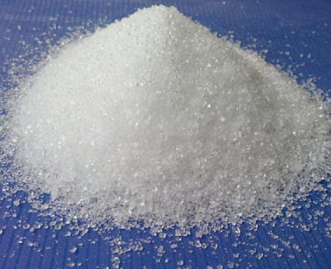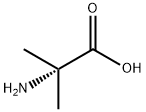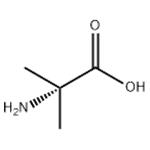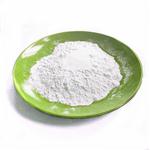Applications
2-Methylalanine is an Alanine (A481400) derivative. Alanine is an amino acid that occurs naturally in nature. It is a functional component in the alanine cycle which regulates the level of alanine aminotransferases which can be used as a diagnostic tool to predict type II diabetes.
Description
2-Aminoisobutyric acid, also known as alpha-methylalanine or a-aminoisobutanoate, belongs to the class of organic compounds known as alpha amino acids. These are amino acids in which the amino group is attached to the carbon atom immediately adjacent to the carboxylate group (alpha carbon). 2-Aminoisobutyric acid is a very hydrophobic molecule, practically insoluble (in water), and relatively neutral. 2-Aminoisobutyric acid exists in all living organisms, ranging from bacteria to humans. Outside of the human body, 2-Aminoisobutyric acid has been detected, but not quantified in, milk (cow). This could make 2-aminoisobutyric acid a potential biomarker for the consumption of these foods. Aminoisobutyric acid is a nonprotein amino acid (is an end product of pyrimidine metabolism) excreted in the urine of about 5% of healthy individuals , and high excretion is an autosomal recessive phenotype.
source
2-aminoisobutyric acid is a rare, non-protein amino acid and end-product of pyrimidine metabolism, excreted in urine and found in some antibiotics of fungal origin. With the exception of a few bacteria, it is non-metabolisable, and therefore used in bioassays. It derives from a propionic acid and an isobutyric acid.
Chemical Properties
White crystalline powder

Uses
2-Aminoisobutyric Acid inotransferases which can be used as a diagnostic tool to predict type II diabetes.
Uses
2-Aminoisobutyric acid is a non- protein amino acid present in some antibiotics. It acts as a strong helix inducer in peptides. It is non-metabolisable used in bioassays.
Preparation
α-Aminoisobutyric Acid is prepared from Acetone (Blatt: Org. Synth. CoIl. vol. H, page 29, 1943) or by the Bucherer method (Org. Synth. vol. XX, 1940, page 42).
Definition
ChEBI: A rare, non-protein amino acid and end-product of pyrimidine metabolism, excreted in urine and found in some antibiotics of fungal origin. With the exception of a few bacteria, it is non-metabolisable, and therefore used in bioassays.
Synthesis Reference(s)
The Journal of Organic Chemistry, 29, p. 1148, 1964
DOI: 10.1021/jo01028a036
reaction suitability
reaction type: solution phase peptide synthesis
Solubility in organics
poorly soluble in alcohol, insoluble in oils.
Purification Methods
Crystallise the acid from aqueous EtOH and dry it at 110o. [Zelinski & Stadnikoff Chem Ber 39 1726 1906, Beilstein





